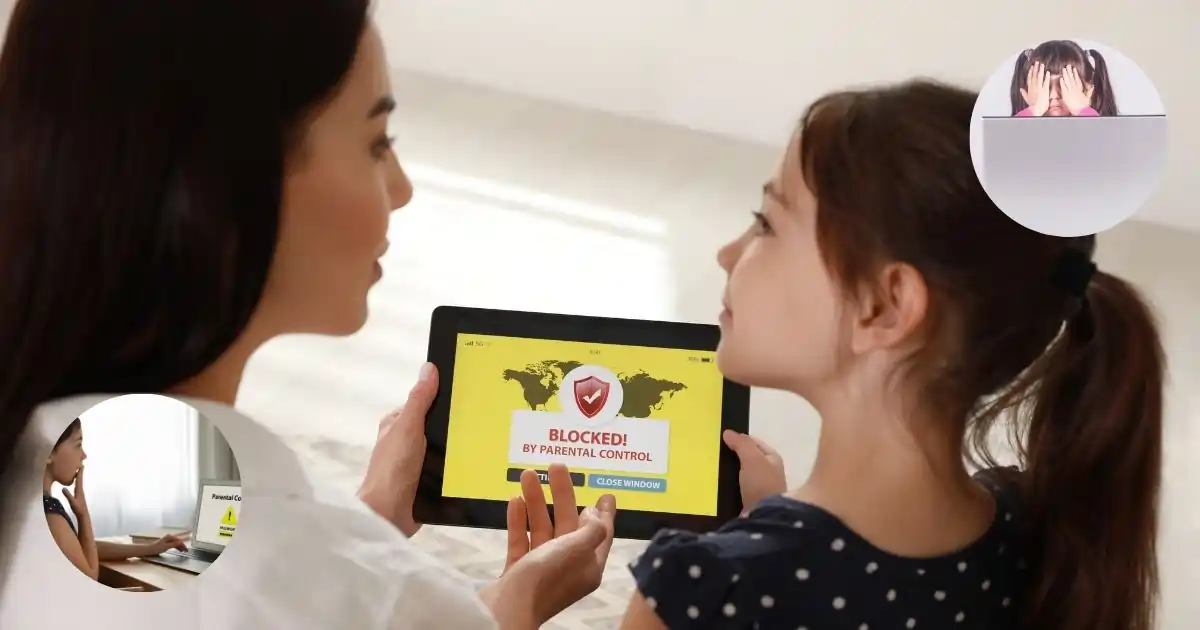The Importance of Digital Balance for Kids in Modern Parenting
The rise of technology has transformed parenting. In today’s tech-driven world, parenting requires a delicate balance between embracing technology and safeguarding children’s well-being. The rapid integration of screens and devices into everyday life makes digital balance for kids a priority for families.
Technology’s Role in Modern Life
-
- Tech permeates all aspects of life: communication, education, entertainment.
- Parents must strike a balance between embracing technology and limiting its effects on children’s mental health.
- Focus on digital wellbeing by creating a healthy tech-life balance at home.
Why Understanding Technology’s Impact on Child Development is Crucial
-
-
- Children process information differently than adults; their minds are more impressionable.
- Excessive exposure to screens can disrupt kids’ development and mental growth.
- Teach tech balance early to encourage responsible digital behavior.
-
As parents, understanding the importance of digital balance for kids will empower you to guide your children toward healthy tech habits that last a lifetime.
What is a Balanced Childhood in the Digital Age?
Defining a Balanced Childhood
A well-rounded childhood involves the right mix of tech interaction and hands-on, real-world experiences i.e. creating digital balance for kids.
- Key elements of a balanced childhood:
- Outdoor play for physical health and emotional well-being.
- Creative activities that foster problem-solving skills.
- Controlled, purposeful use of digital devices for learning and entertainment.
- Benefits of Real-World Experiences:
- Encourages social interaction and teamwork.
- Enhances physical and mental development.
- Reduces the risk of tech over-reliance.
Digital Balance for Kids and Real-World Activities
- Screen-free time is critical for building family bonds and nurturing a child’s real-world skills.
- Plan diverse activities that promote holistic development:
- Family board games or reading sessions.
- Outdoor adventures like hiking or biking.
- Creative projects, art, or music lessons.
Start integrating more outdoor and creative activities into your child’s routine today to achieve digital balance for kids! Balanced childhoods lead to healthier, more resilient children.
Understanding Technology and Its Role in Children’s Lives
What is Technology for Kids?
Explaining technology in kid-friendly language helps them grasp its purpose and potential benefits.
- For kids, technology often includes:
- Educational apps that make learning fun and interactive.
- Learning platforms that support schoolwork and enhance creativity.
- Interactive tools such as drawing tablets and coding games.
Importance of Technology in Our Lives
- Technology plays a significant role in:
- Enhancing communication with family, friends, and educators.
- Fostering personal growth by developing new skills through online resources.
- Supporting educational pursuits through apps and platforms.
Help your child embrace technology as a tool for growth, but with clear boundaries to ensure balanced use.
The Impact of Technology on Children
Technology is a two-pronged sword in the sense that its use has its pros and cons. To get maximum benefit and avoid harms, it needs to create a digital balance for kids.
Positive Effects of Technology
Technology has numerous advantages for kids, especially when used mindfully:
- Benefits for Toddlers:
- Educational apps that boost cognitive skills and language development.
- Interactive videos that engage toddlers in learning through play.
- Fostering Creativity and Problem-Solving:
- Apps and tools that encourage kids to think outside the box and solve problems.
- Platforms that allow children to collaborate on creative projects, enhancing teamwork.
- Enhancing Social Skills:
- Digital tools for online collaboration that teach kids how to work with others.
- Group projects that require communication and coordination.
Negative Effects of Technology
However, excessive screen time can result in several challenges:
- Behavioral Changes:
- Increased aggression and frustration due to overexposure to stimulating content.
- Shortened attention spans caused by constant screen interaction.
- Cognitive Development:
- Too much screen time can interfere with learning and retention.
- Physical Health:
- Sedentary behavior can lead to social isolation and a lack of physical activity, as more time is utilized by kids watching tv, playing games, affecting overall health.
Evaluate your child’s screen time by employing a digital balance for kids. Are they reaping the benefits, or is it time to cut back? Make necessary adjustments to avoid negative impacts.
The Need for Tech-Life Balance
Why is a Tech-Life Balance Important?
A tech-life balance promotes well-being by reducing the mental strain of constant digital interaction.
- Benefits of setting tech boundaries:
- Improves mental and physical health.
- Reduces the risk of anxiety and stress in children.
- Encourages real-world engagement, vital for kids’ wellbeing.
Consequences of Imbalance
- Children who rely too much on screens may experience:
- Developmental delays and weakened cognitive function.
- Emotional challenges like irritability and disconnection from others.
- Damaged social skills due to lack of face-to-face interactions.
Introduce a digital balance for kids in your home. Small changes today can have lasting positive effects on your child’s future.
Strategies for Balancing Technology Use
Creating a Family Media Plan
The important questions that need attention are; what is a healthy online time limit for teens online? And how to reduce screen time?
- Set clear expectations for tech use:
- Establish daily time limits for screen time. Nurturing healthy screen time habits during early childhood is a blessing.
- Create a schedule that includes tech-free activities to encourage family interaction.
Establishing Screen-Free Zones and Times
- Make meals, bedtimes, and family gatherings screen-free.
- Benefits include:
- More quality time spent interacting and communicating as a family.
- Reduced distractions leading to more meaningful conversations.
Encouraging Open Discussions About Technology
- Talk to your children about their digital experiences:
- Discuss the pros and cons of social media use.
- Address issues such as cyberbullying and internet safety.
Start your family’s media plan today by setting one tech-free day a week. Engage in creative activities and strengthen family bonds.
Teaching Responsible Technology Use
The responsible use of technology is very crucial and it can be achieved by devising and ensuring digital balance for kids.
Promoting Media Literacy
- Teach your child to critically evaluate the content they encounter:
- How to differentiate between real and fake information.
- Recognizing the influence of social media and advertising.
Modeling Healthy Digital Behavior
- Lead by example:
- Show moderation in your own tech habits.
- Practice mindful screen time use and encourage tech-free family interactions.
Setting Parental Controls and Monitoring Usage
- Use parental controls to:
- Limit access to inappropriate content.
- Ensure a balance between supervision and independence.

Be the tech role model your children need. Show them how to use technology wisely, and they’ll follow your lead.
Finding the Right Balance Between Technology and Real Life
Encouraging Alternatives to Screen Time
- Offer fun and engaging alternatives to digital devices:
- Outdoor play that promotes physical health.
- Creative activities like painting, music, and crafting.
Incorporating Technology in a Healthy Way
- Blend hands-on experiences with educational technology:
- Use learning apps to complement traditional schoolwork.
- Allow screen time that encourages active participation, not passive consumption.
The Role of Parents in Screen Time Management
Managing screen times is crucial to achieve digital balance for kids in this era of technology.
- Differentiate between productive and unproductive screen time:
- Limit time spent on entertainment-focused apps.
- Encourage use of educational tools and learning platforms that promote growth.
Identify one activity this week that encourages your child’s development beyond the screen. Lead them toward a balanced tech-life routine.
Conclusion
Embracing Technology While Maintaining a Healthy Digital Balance for Kids
In today’s digital world, it’s essential to embrace the benefits of technology while maintaining a strong sense of balance. Tech-savvy parenting means fostering digital wellbeing for children and ensuring they have a fulfilling, well-rounded childhood that includes both digital and real-world experiences.
Start today! Take a proactive role in your child’s digital journey by implementing small changes that support both their mental health and wellbeing.
FAQs
What is digital balance for kids?
Digital balance for kids refers to managing technology use in a way that encourages healthy habits, ensuring children engage in both digital and real-world activities.
How can I help my child achieve a tech-life balance?
Create a family media plan, establish screen-free zones, and promote alternative activities like outdoor play and creative projects.
What are the risks of too much screen time for kids?
Excessive screen time can lead to behavioral changes, cognitive delays, and physical health issues such as sedentary behavior and social isolation.
How can I promote responsible tech use for my kids?
Teach media literacy, set parental controls, and model healthy digital behavior by showing your own mindful screen time habits.
How do I reduce my child’s screen time without causing frustration?
Start with small changes, like setting time limits or introducing fun tech-free activities. Gradually increase screen-free times to avoid sudden disruptions.
Why is a tech-life balance important for children?
Creating a digital balanced for kids ensures children develop holistically, with adequate time for physical activity, social interaction, and creative play.
How can parents ensure internet safety for kids?
By using parental controls, monitoring online activity, and teaching media literacy, parents can safeguard their children from online threats and inappropriate content, while creating digital balance for kids.













